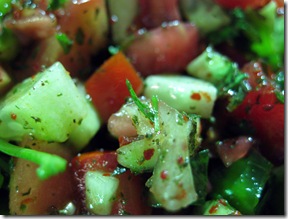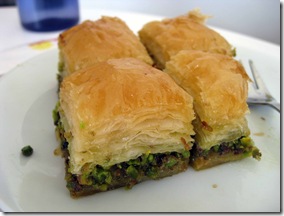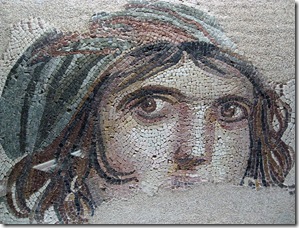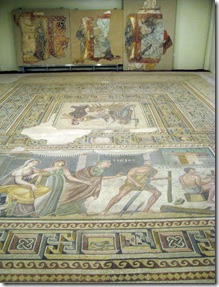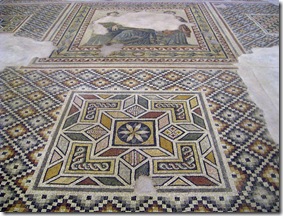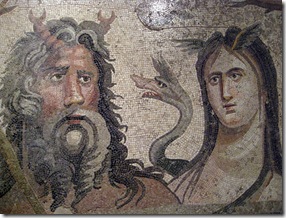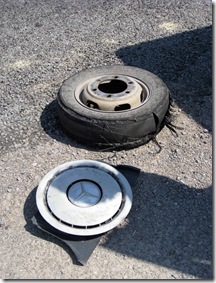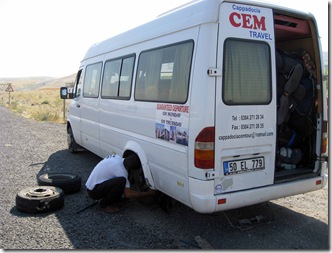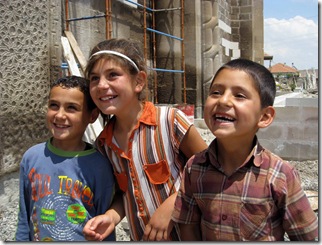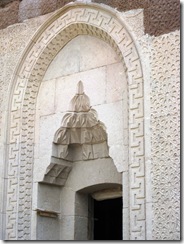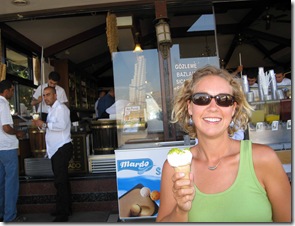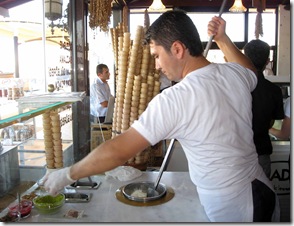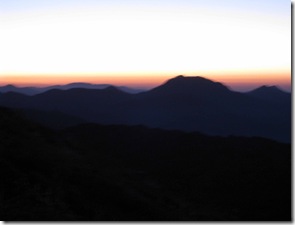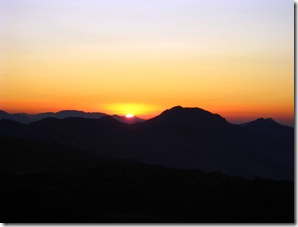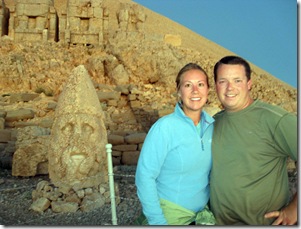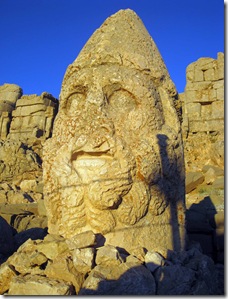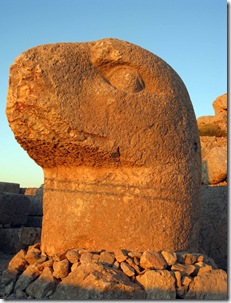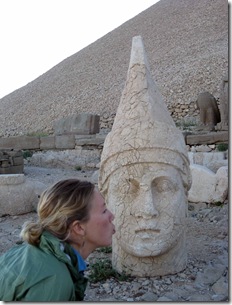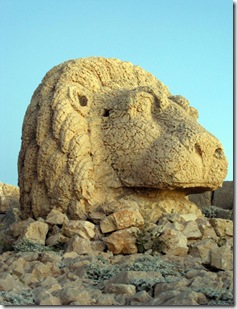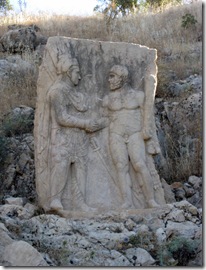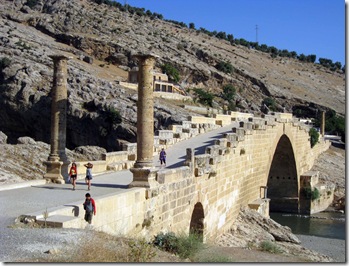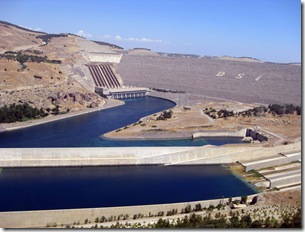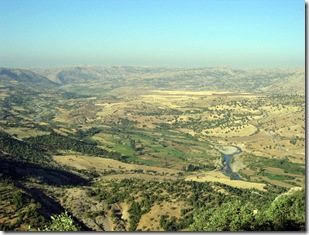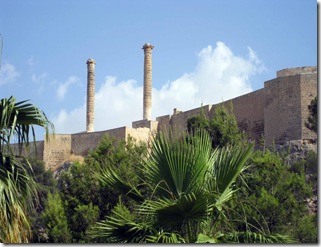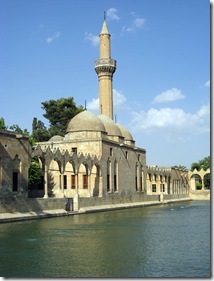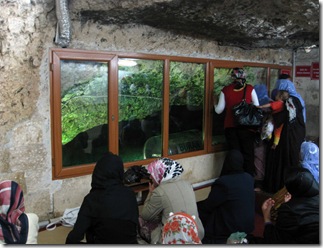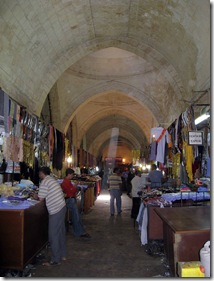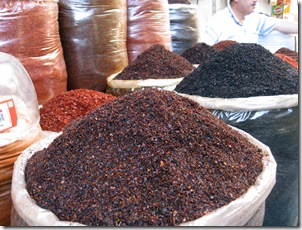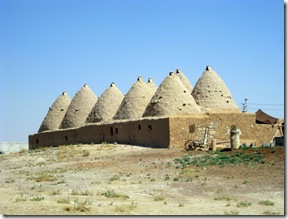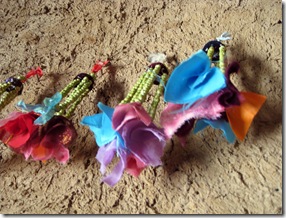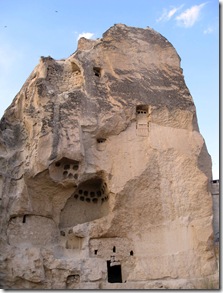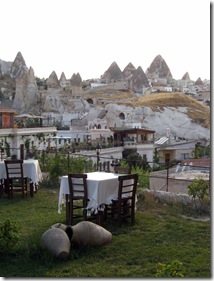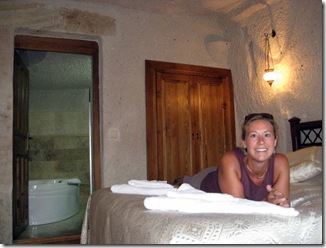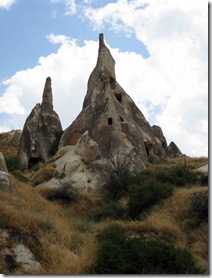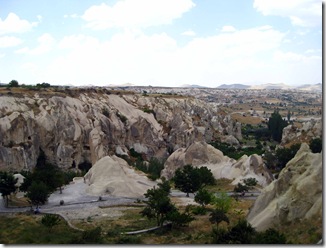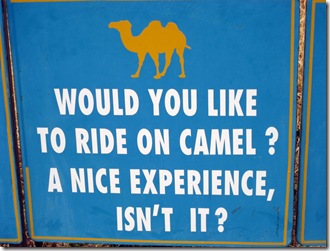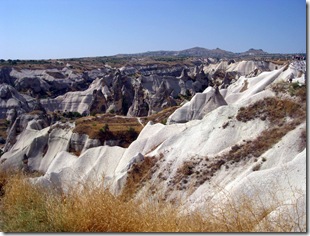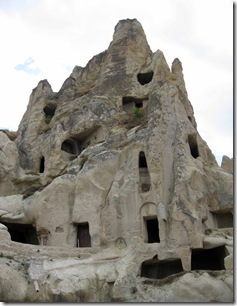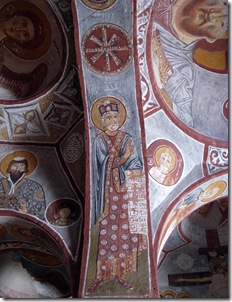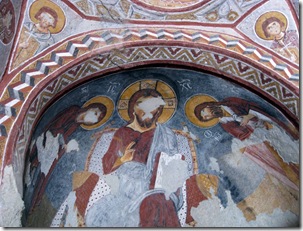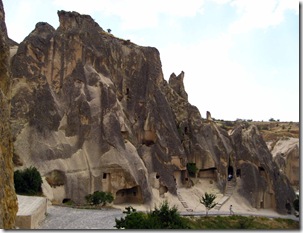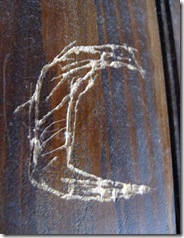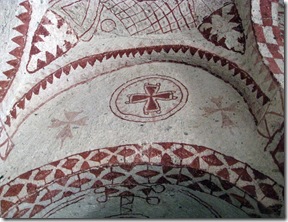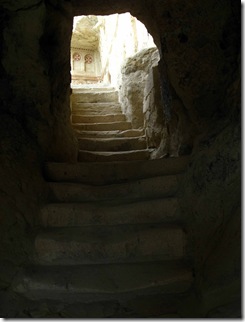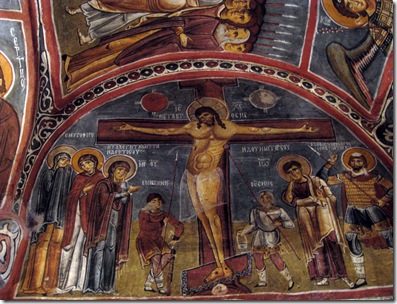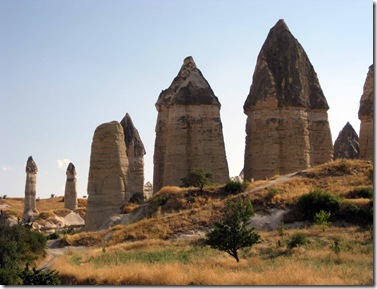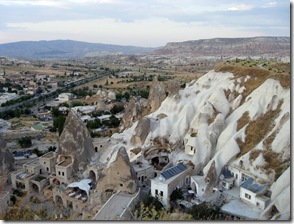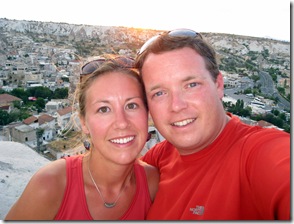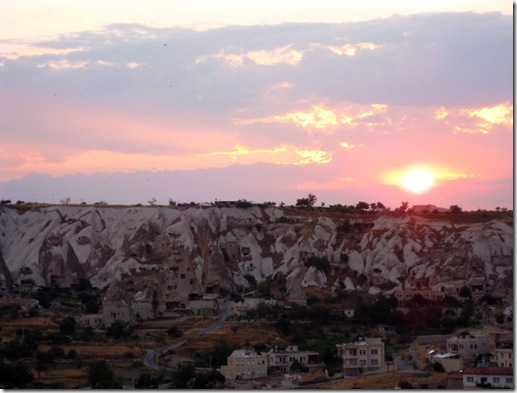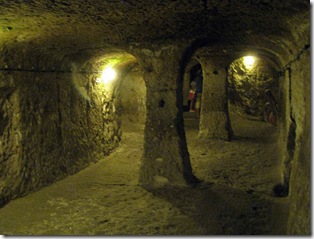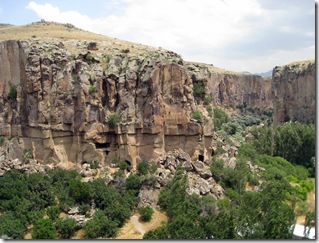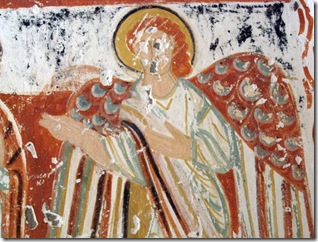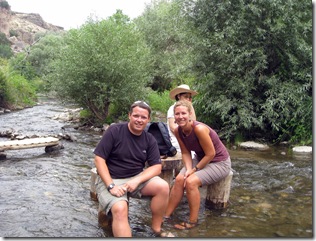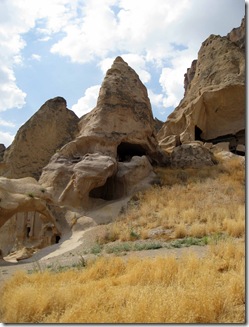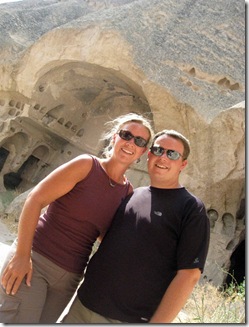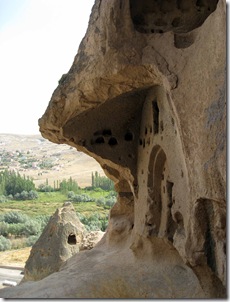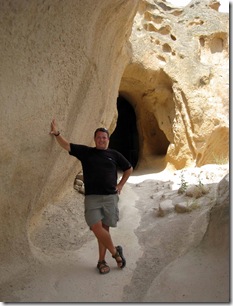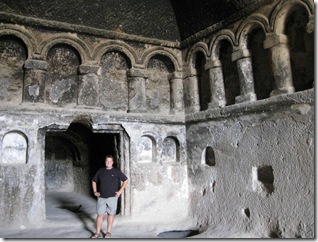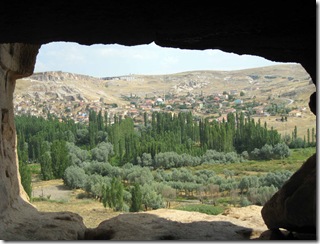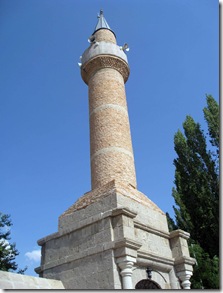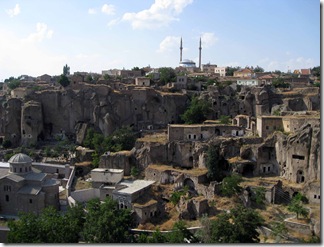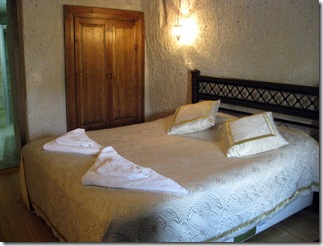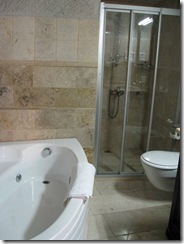Stats:
Destination: Aleppo, Syria
Number of Days Spent: 2 days
Where we stayed: Hotel Samir - 800 Syrian Pounds without breakfast and toilet paper?!?($17 & you couldn't pay me to go back, the place had a very weird vibe...we got in from the border around midnight and took the second thing available...you should have seen the first one. Problems with Syrian ATMs prevented us from switching the next day.)
Best restaurant: Surprisingly we actually really liked the cafe in front of the citadel (second to last one in a row of about 5). Their prices were definitely high by Syrian standards but it was very atmospheric and a great people watching spot. They have terrific hommous (65 pounds - $1.50)!
Best of: Citadel at night, the sprawling souq both eerily empty on Friday morning and bustling the following day
Worst of: We couldn't get any ATMs to work the morning after we arrived. We tried 8 or 9 of them with both of our cards. We eventually headed back to the hotel to tell them that we would stay an extra night because we needed to change money. That meant another night's stay at the equivalent of the Bates Motel. Ew. On the bright side the Sheraton Hotel changed our extra Turkish lira at the current bank rate and didn't charge us a commission. Later that day we found two separate ATMs that allowed us to take out enough money to get us through the first few stops in Syria.
Most Memorable: Sipping our beverages and watching the locals out for a "Sunday" stroll by the citadel
Useful Tip: Bring some cash just in case the ATMs don't work with your card. If you run into trouble the Sheraton will change money at the current bank rate with no commission (for us the bank wasn't an option as it was Friday, the Muslim holy day, and everything was closed). It's also conveniently a source of welcome A/C & clean bathrooms, and extra rolls of TP :-).
After arriving at nearly midnight from the border, we went to one of the cheaper hotels, only to discover that a) it wasn't so cheap and b) it had a squat toilet. Tired and exhausted, we were going to stay anyway but when he asked me to go and find a place to make copies of our passport instead of taking his lazy butt to do it, we grabbed our bags and said no thanks. We walked down the street to the friendly backpacker hotel, the ??? but it was full so they took us across the street to the Samir. Despite not having eaten since breakfast, we were more tired than hungry so we crashed and decided to tackle the money and food issue the next morning.
Wandering around town, now starving and still no Syrian pounds to be had, we set out to find an ATM. After multiple failed attempts using a couple of different cards, we went to the Sheraton and changed some money. The Sheraton, the only big Western hotel in town is new to the scene. A landmark in itself, we found the sight interesting in that it is completely surrounded by what looks like a war zone. Chunks of concrete and rebar lie all over acting as a buffer zone between the hotel and the street. While it makes sense to have this space given the recent attacks on similar properties around the world, the scene is quite contrasting. Perhaps they have plans in the future for landscaping...
Finally having a bit of cash, things were starting to look up. We headed over to the Christian Quarter and had a refreshing bowl of foul (fava bean soup) and strolled around the ancient quarter. From the outside, all the homes look the same. In fact, they look rather ordinary. But being this is the richest part of town, the inside reveals a different story. In fact they kept the outside looking unkempt to discourage burglars and other unsavory characters. We poked our head into one of the homes turned hotel for a look at the opulence that goes on behind closed doors. Most of the homes have rooms that surround a well manicured central courtyard, a theme that is commonplace in the nicer, older homes in the Middle East.
After trying a couple more ATM's (in what had become an all day search) we finally found one that would accept our card! Cash problem completely solved, we spent the rest of the heat of the day in an air conditioned coffee shop making use of the free wireless (sans Facebook and our blog of course which were blocked by the Syrian government).
Once the air had cooled a bit, we made our way over to the Citadel just before it closed. The top of the castle has great views of downtown Aleppo and the entrance is interesting as it curves around and up to avoid a direct attack on the gate from a batter ram. Most annoying, if you go near closing time, the guards are in a hurry to get you out ahead of closing time so the man stands on top constantly blowing a whistle and yelling. We ignored him as best we could and finished looking around before leaving on our own accord.
At night however is the best time for strolling & for people watching. We sat down at a cafe in front of the castle and settled in for a long leisurely dinner. Watching the varying people walking by in front of the ever changing colors of the walkway leading up to the gates of the castle is one of the simple joys of Aleppo. Balloon vendors selling to the kids, devout Muslim women completely covered from head to toe in black, the hip and youth wearing western clothes with a head scarf mingling with the smattering of western tourists that come here.
Our last stop of the evening was the Baron Hotel, where Lawrence of Arabia along with a whole other cast of important & infamous historical figures once stayed (including Agatha Christie, Charles Lindburgh, Teddy Roosevelt & King Faisal of Iran). As Aleppo was the last stop on the famous Orient Express, the hotel was THE place to stay before and after boarding. Given its prestigious history, one would think that it had all the class of a Hilton. The owners, however, prefer to have the place look as it did in the 30's so other than a few minor updates (air con, a balcony here or there) it's just the same as it was then. It's also one of the few places in Aleppo that serves beer and so it became a must stop on our itinerary.
On our last morning in Aleppo we took another stroll through the souk, drastically different from our Friday one. On Friday everything was closed and locked up tight but by Saturday mid-morning the place was really hopping. Trucks and donkeys with carts barreled through the street and the shopkeepers shouted out to potential customers. Compared to the markets in Turkey, which have become more tourist oriented, Aleppo's souk is far more traditional. It is one of the few markets that is used daily by locals to buy anything from spices to backpacks to toiletries.
After getting our feel of shopping, we hoped on the bus and headed down to our next stop, the waterwheels of Hama.

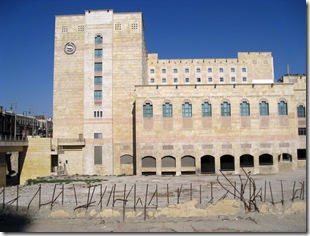
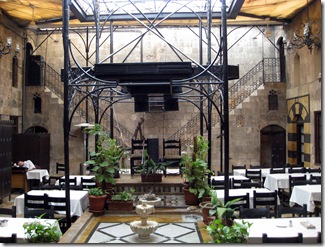
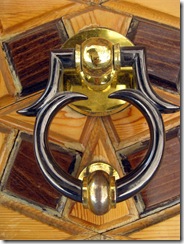
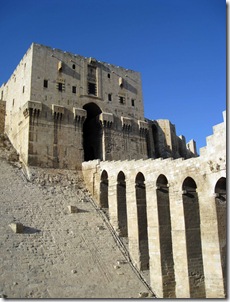
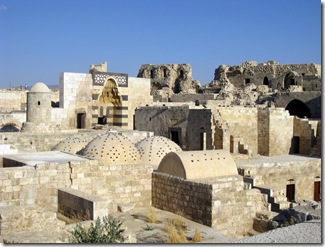
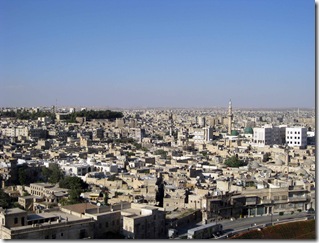
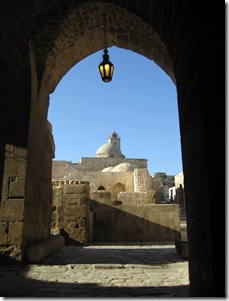
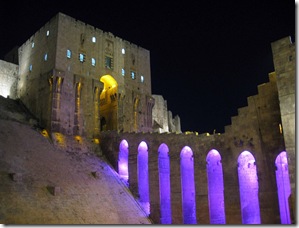
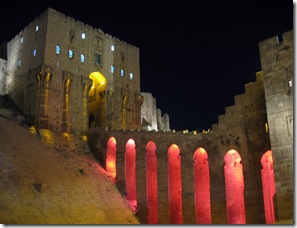
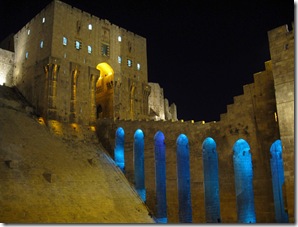
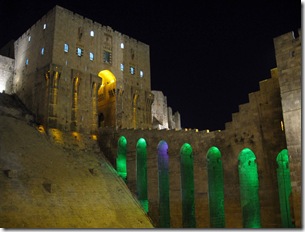
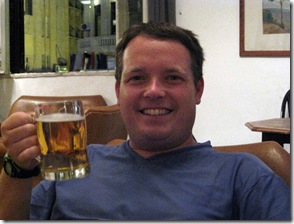
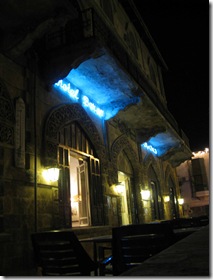
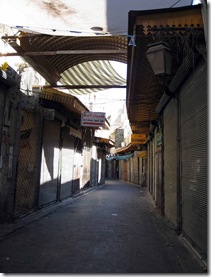
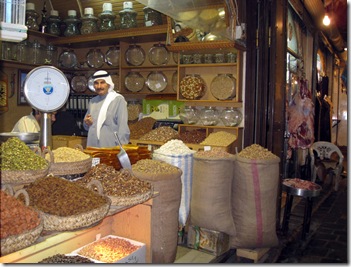
![IMG_2305 [640x480]](http://lh5.ggpht.com/_XPN-SmOfumQ/SoftNDH5JAI/AAAAAAAACn8/UuGOXk1mkpo/IMG_2305640x480_thumb1.jpg?imgmax=800)
![IMG_2303 [640x480]](http://lh5.ggpht.com/_XPN-SmOfumQ/SoftP4NCZbI/AAAAAAAACoE/E-edTRrwL-g/IMG_2303640x480_thumb1.jpg?imgmax=800)
